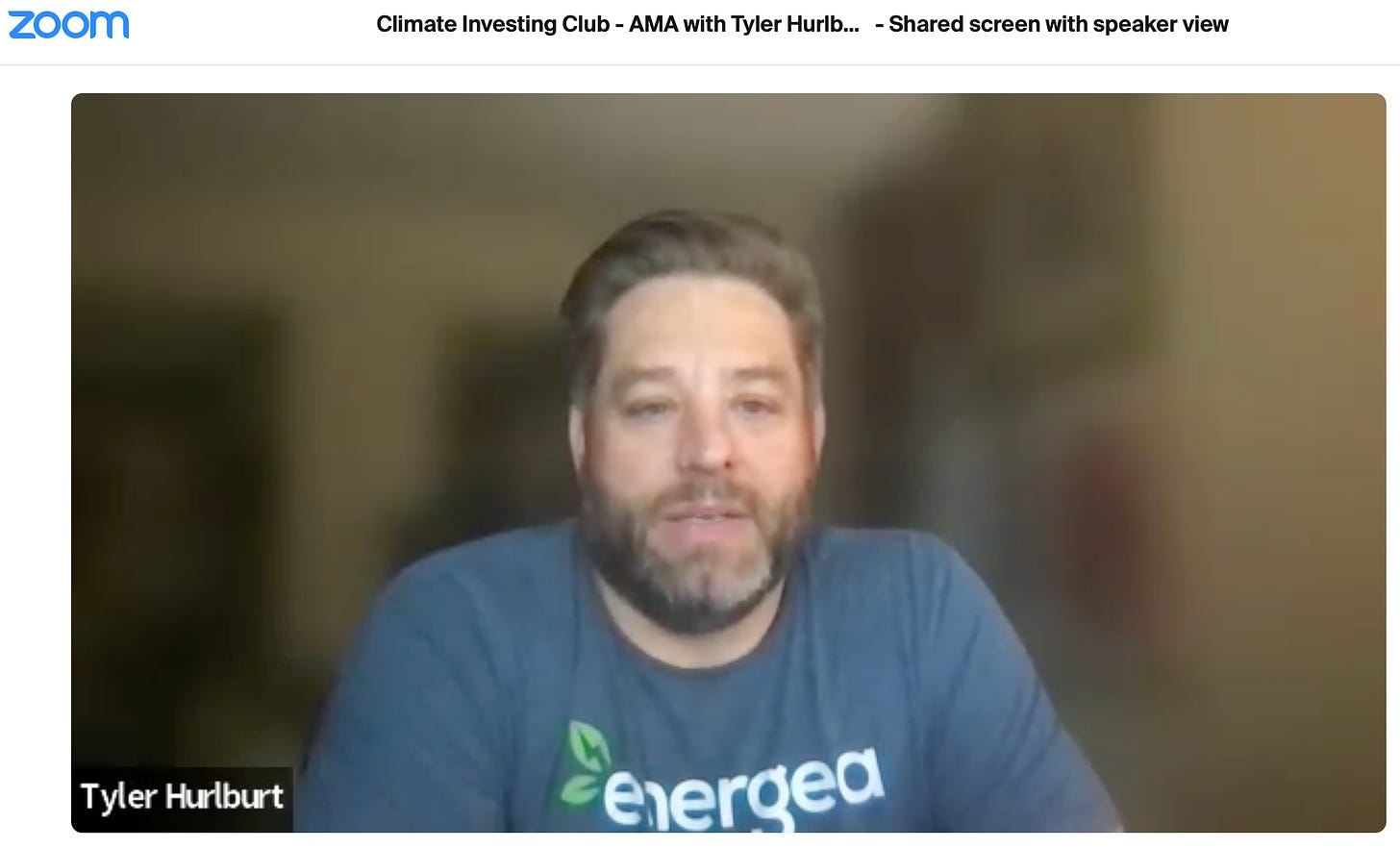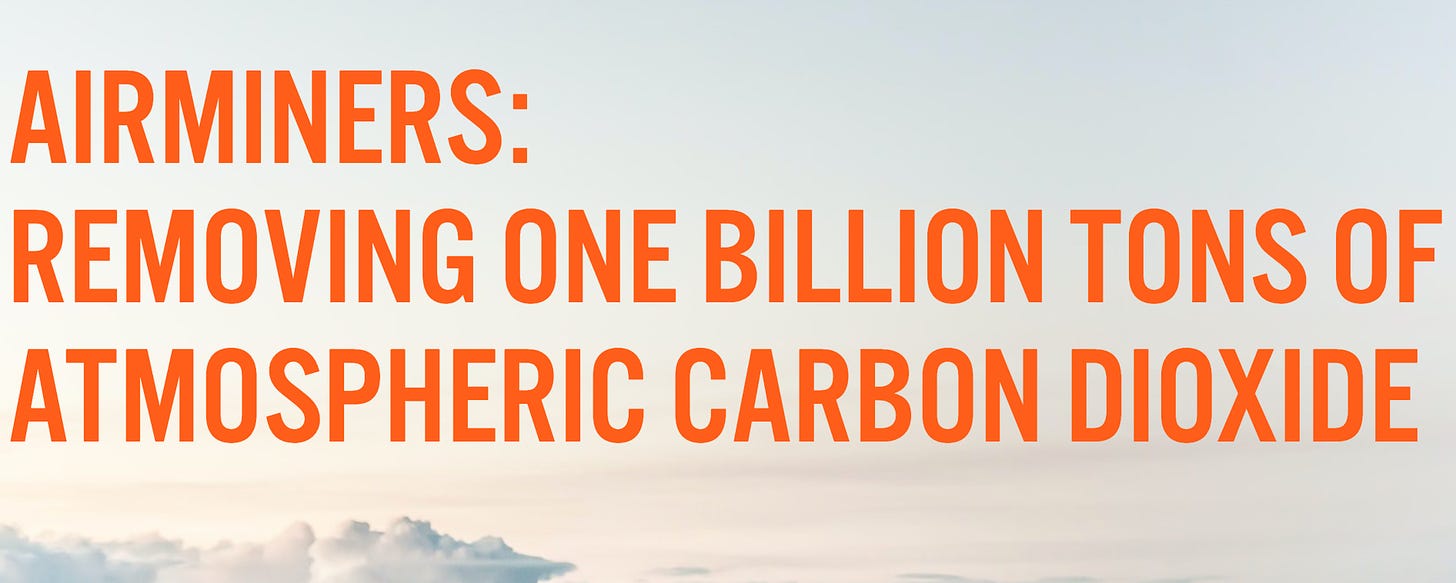👋 37 new Substackers
🎉 85 new Climate Investing Club members
📖 5 min read time
We’re excited to announce that we’re gearing up to launch our first product! Our goal is to give everyone the chance to be a climate investor, and this product will be our way to test the market.
🎉 Help us make our first climate product!
Intention is a community-first organization. So, we’re asking you: what kind of financial products do you want to see? Would you be interested in participating as a beta tester? We would love for you to fill out this Typeform to help us build the best possible product.
Thanks for your support! We can’t wait to build the future of climate investing with you.
🛜 CIC Slack news: Events, events, events!
Another big thanks to Tyler Hurlburt of Energea for joining us for last week’s AMA, which you can find the video of here. We’ve got a full slate of events ahead of us:
August 25: AMA w/ Raise Green
August 31: Crowdfunding for Climate w/ KingsCrowd
Sept 7: The Climate Capital Stack w/ Daniel Kriozere
Sept 13: Climate-Friendly Financials w/ GreenPortfolio
Sept 26: AMA w/ WattCarbon
Sept 29: AMA w/ Grid United’s Michael Skelly
The next generation of carbon offsets
Let’s say you’ve already done everything you can to reduce carbon emissions in your home, or your business operations (or maybe you haven’t), and now you want to take your impact a step further. So you contribute money to a project that results in way more carbon reduction than if you spent that same amount of money on your own decarbonization efforts. In theory, that sounds like a reasonable approach. That’s essentially what carbon offsets are.
However, In practice, there’s plenty of controversy in the carbon offset space. Beyond the fundamental criticism of “paying to pollute”, there are other significant challenges, many of them stemming from low cost tree planting/forest preservation programs as offsets:
Permanence: Traditional forestry offsets struggle to meet the minimum thresholds for carbon storage time-frames. Trees planted to offset carbon footprints can and do go up in smoke (back into the atmosphere) due to intense wildfire activity. So called buffer pools to insure against this have proven insufficient.
Leakage: If a forestry offset project just shifts logging to a different, unprotected forest, then that project is considered leaky (and ineffective).
Additionality: Are the baseline emission measurements actually accurate, or have they been inflated in order to generate more carbon credits? Are project estimates actually in line with the outcomes?
Let’s take a second to differentiate between carbon offsets and carbon credits. Carbon credits are tradable certificates that reflect one metric ton of carbon dioxide emissions that has been reduced in some manner. These credits are generated by some action being taken, and then a government or an independent body certifying the reduction in emissions according to some standard. Sometimes, the project generating the credits will sell the credits to a business in a different location, which helps to get the project financed. The business buying the credit does so in order to claim that they have offset their own emissions. Reforestation projects, wetland restorations, and renewable energy projects are examples of project types that are often used as the source of carbon offsets.
Historically, measurement and verification of the carbon reduction behind the offsets have fallen short. To solve this problem, several new players have emerged to create viable, high-quality opportunities for offsets. They channel investment towards decarbonization projects that are much more robust. In this article, we’ll dive into three of these companies adopting next-generation approaches.
Clearloop is evolving the concept of the renewable energy credit. A solar project produces a renewable energy credit, which can be sold to businesses so they can claim that they are using carbon free electricity without actually having to do anything different. But the actual carbon impact of a solar project is highly dependent on where it’s located. For example, a solar project in California displaces electricity that is already relatively low carbon, while a solar project in Tennessee, which is where Clearloop’s first project is located, displaces electricity that is more likely to be coal-generated. So from a carbon perspective, the project in Tennessee is more impactful than the one from California. Clearloop uses advanced tracking and carbon accounting to match corporate offset buyers with solar projects in carbon intensive areas of the US. At the same time, this gives many communities access to renewable energy for the first time.
WattCarbon
WattCarbon’s marketplace provides ways to channel investment towards distributed energy and building decarbonization projects, like home electrification. WattCarbon leverages data from energy meters, weather, power grid reports, and building construction models to provide a more accurate measurement of the carbon reduction achieved from any project in their portfolio. Their proprietary data analysis also creates better tracking for the effectiveness and impact of the offsetting projects in the buildings they decarbonize.
While Clearloop and Wattcarbon enable projects that prevent future emissions, AirMiners approach to decarbonization is to reverse historic emissions via carbon removal projects. In their Kiloton Fund, they are making a pre-market commitment by investing $200K to buy carbon credits from budding carbon removal startups. Their goal is threefold: to help fund emerging carbon removal startups, to drive a positive return for their investors, and to remove existing carbon from the atmosphere. This fund is acting as proof of concept as they build a larger fund aptly named the Megaton Fund.
If you are interested in learning more about carbon offsets, we encourage you to check out these companies, learn more about how they are creating better carbon offset solutions, and participate in their initiatives. Our goals as people, corporations, and countries should be to be carbon negative; let’s work together to get there!
📈 New ways to invest in climate
What’s new since last week’s newsletter. Disclaimers: selection based on company description but impact not assessed. Not investing advice, DYOR.
BIB Technologies ($18M, equity): Refrigerated mobile storefronts using our smart shelf technology powered by its own clean energy source.
Bimotal ($25M, equity): Powering electric vehicles with better motors, batteries, electronics, and software.
Gravity Power ($25M, equity): Highly efficient energy storage technology that reduces carbon emissions while being easily scalable for global markets.
Myro ($5M, equity): Premium concentrated hotel amenities that save money, save space and save the planet.
Renewables.org (beta): Avoid 19 times the carbon investing in emerging market solar & get repaid in 5 years.
White Oak Pastures (7% interest, 6yr loan): A long-time leader in human-scale, regenerative agriculture, WOP is transitioning towards direct-to-consumer retail.







